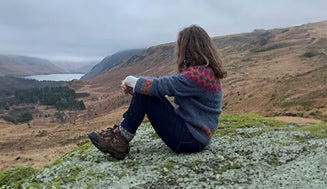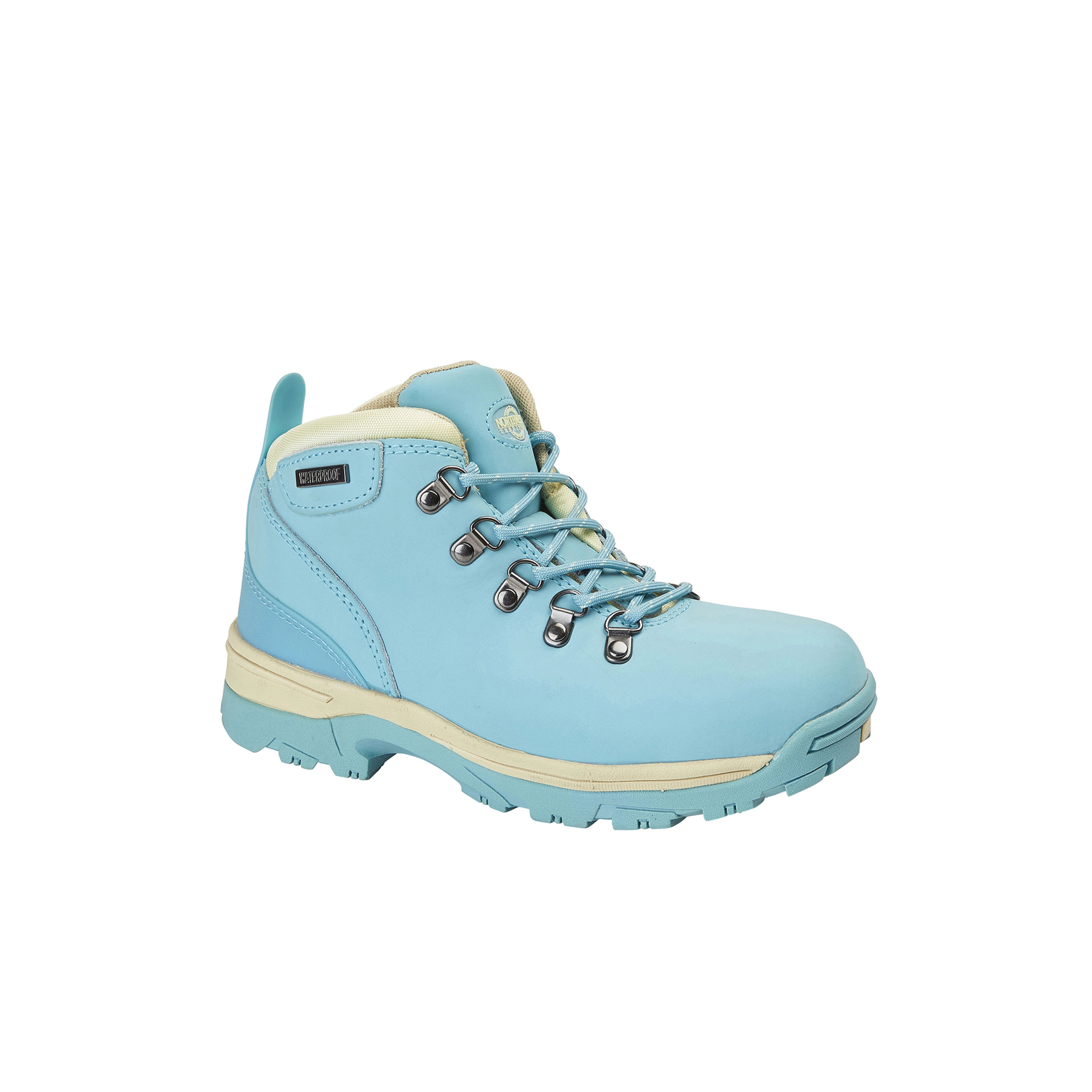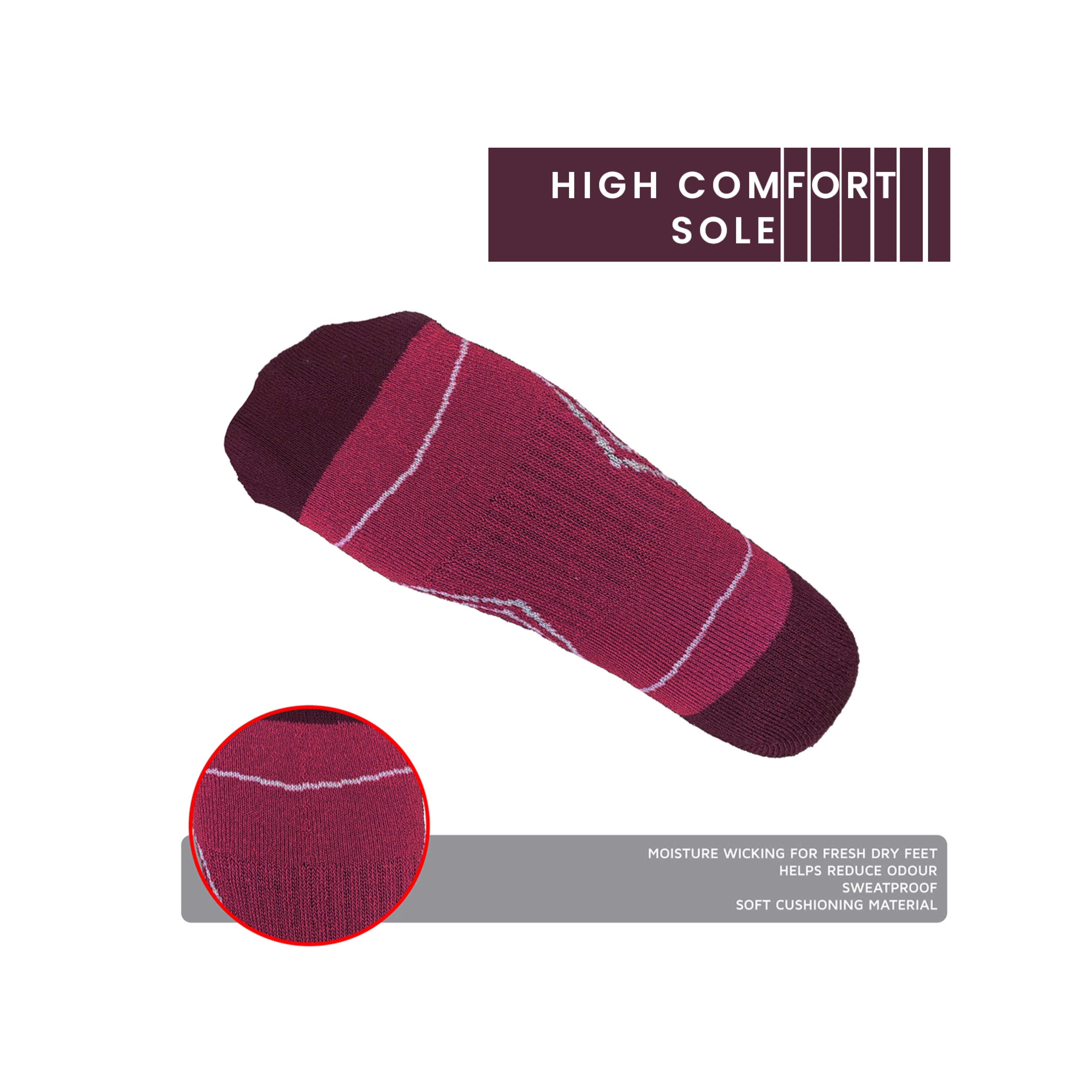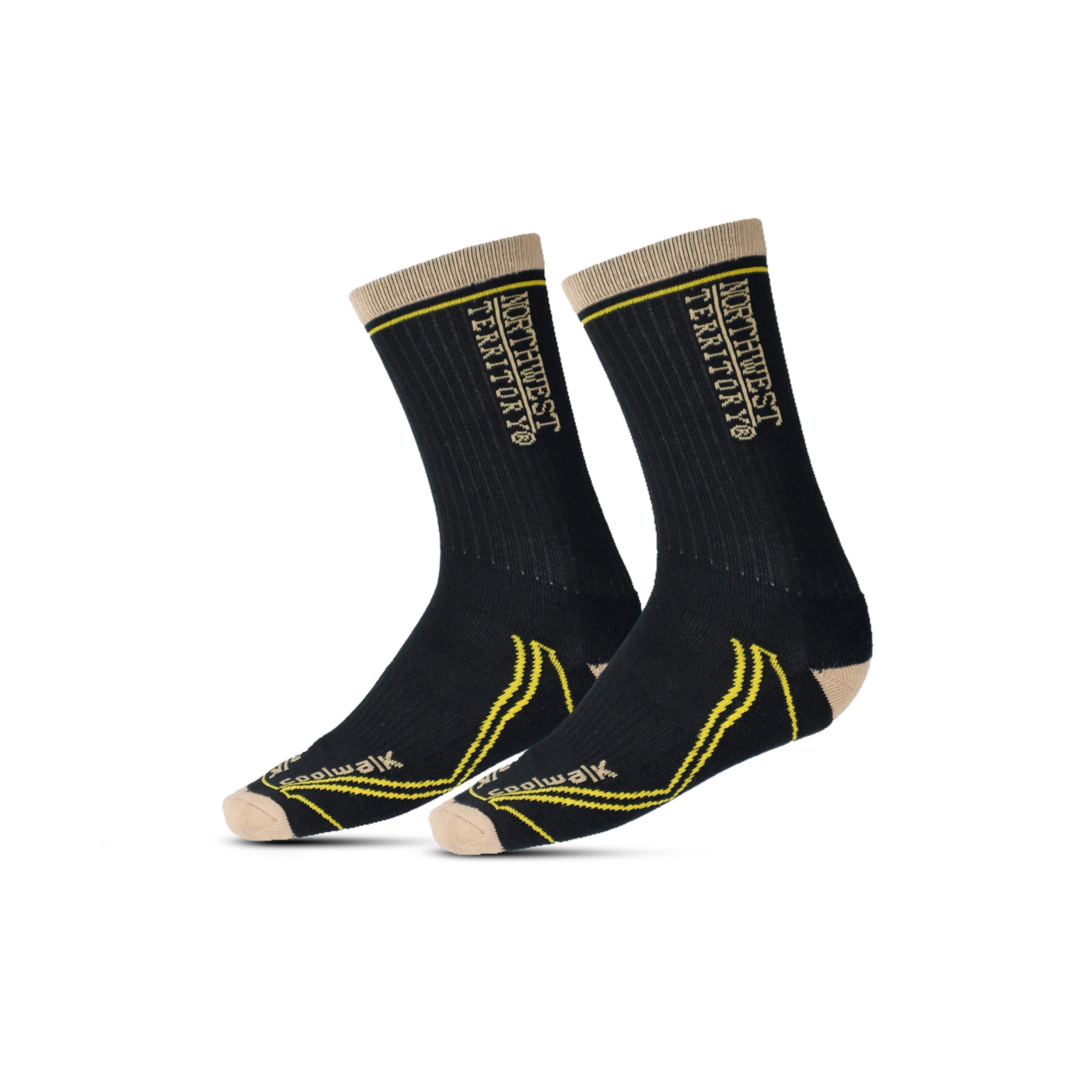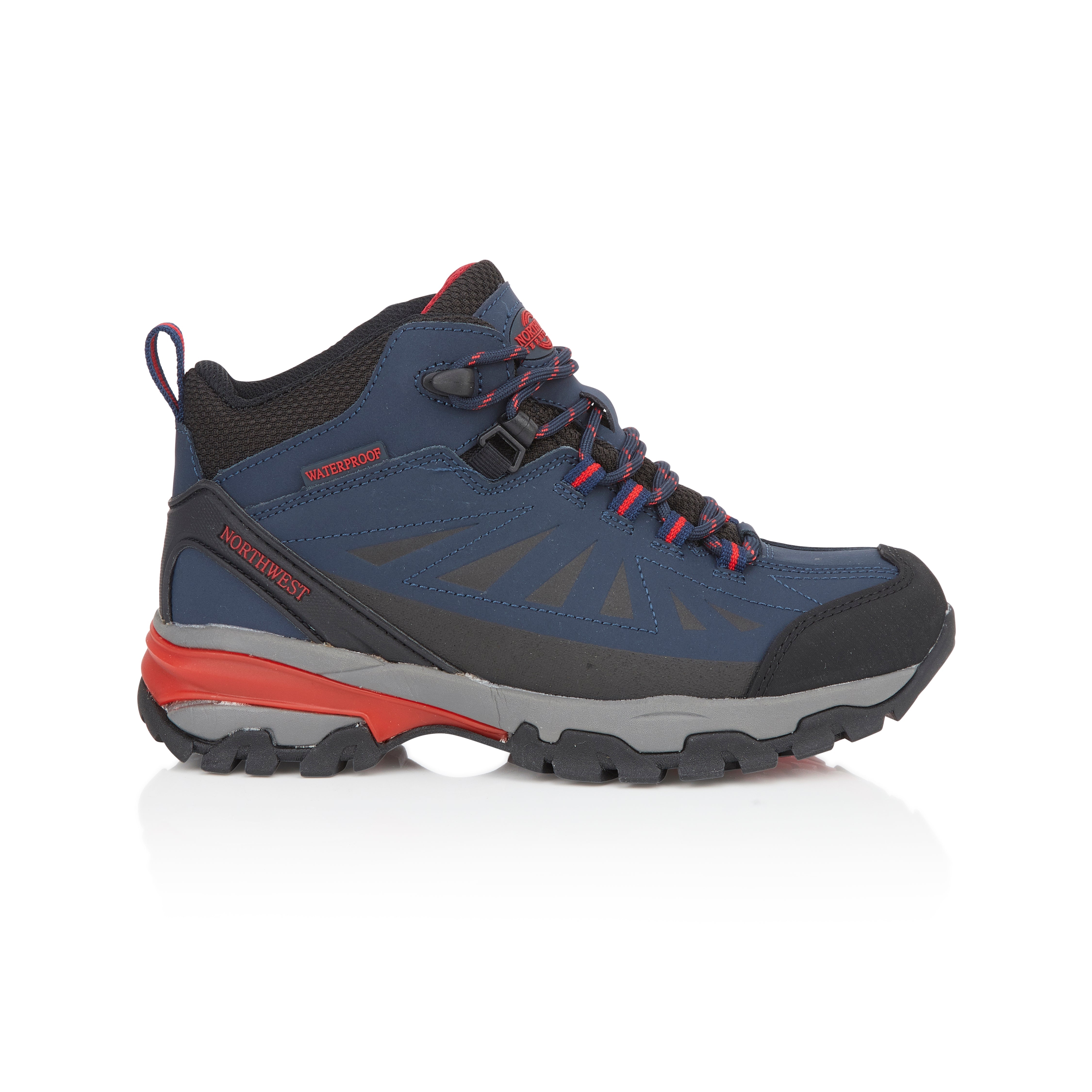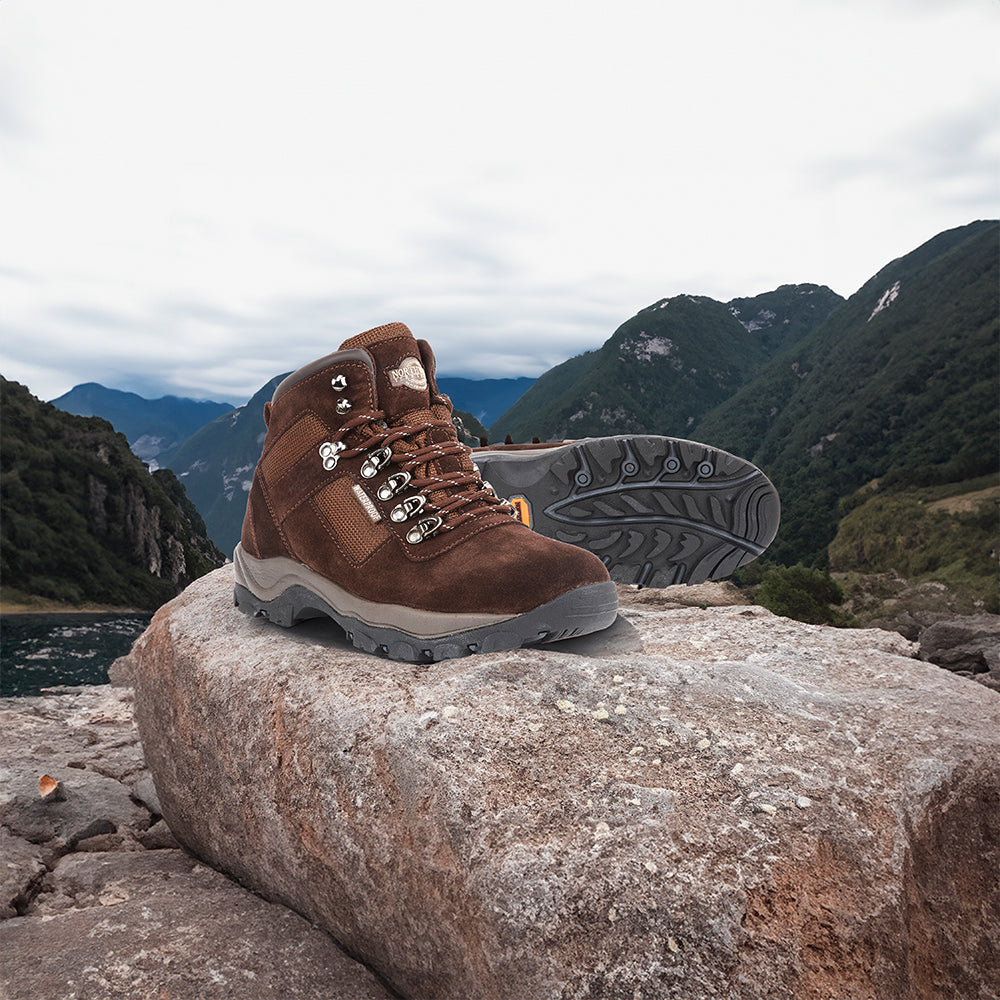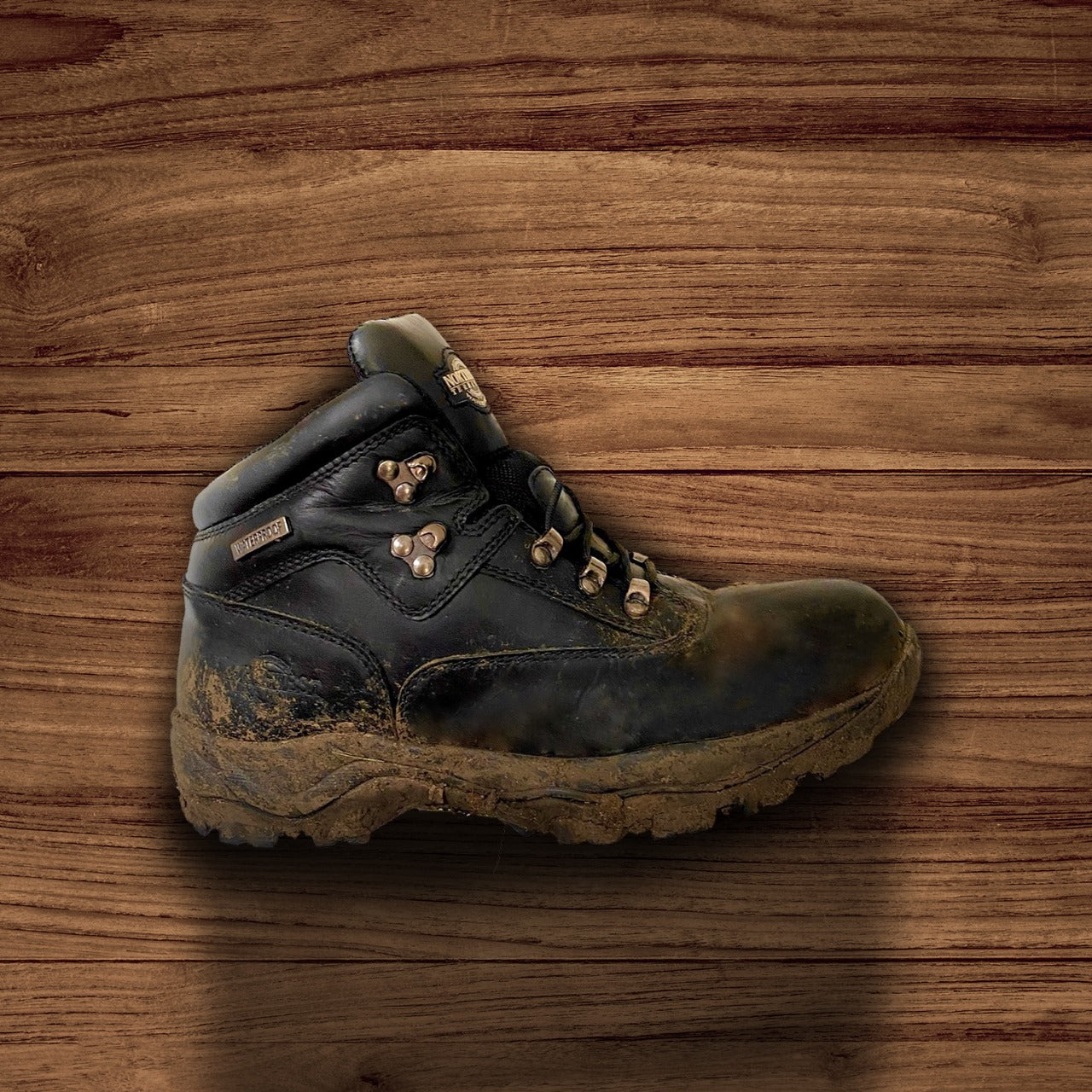
STEP 1 - BREAKING IN
Before embarking on a long hike, it's crucial to ensure your boots or shoes are comfortable.
The time required to break them in can vary based on several factors, including the material and your walking style.
In order to break in, we recommend wearing your new boots and shoes over a thick sock for an hour within the house on alternate days until it gets comfortable.

STEP 2 - CLEANING
Cleaning and maintaining your boots or shoes can help extend their life and keep them looking good. Here are some steps to follow:
Brush: Start by brushing off dirt and debris from the surface of your boots or shoes using a soft, dry brush. This helps prevent dirt from getting ground into the material.
Dry: If your boots or shoes have become wet, stuff them with a towel to absorb moisture. This will help prevent odours and mould growth.
Wash: Use a lightly damp cloth to gently wipe the outside of your boots or shoes. Avoid using harsh chemicals or soaking them in water, as this can damage the material.
Dry: After cleaning, stuff your boots or shoes with tissue paper or newspaper. This will help them maintain their shape and absorb any remaining moisture. Be sure to replace the paper when it becomes damp to promote the drying process.

STEP 3 - CONDITIONING
Caring for leather boots or shoes is essential to maintain their appearance and durability. One important step in leather care is to regularly apply a conditioner to the leather uppers. Here's how to do it:
Clean First: Before applying conditioner, make sure your boots or shoes are clean. Remove any dirt or dust from the surface using a soft brush or a damp cloth. Allow them to dry completely.
Choose the Right Conditioner: Select a high-quality leather conditioner or cream. The conditioner should be appropriate for the type of leather your boots or shoes are made from. Different leathers, such as full-grain, suede, or nubuck, may require specific types of conditioners.
Test in an Inconspicuous Area: Before applying the conditioner to the entire surface, it's a good practice to test it in a small, inconspicuous area of the boots or shoes. This helps ensure that the conditioner won't cause any discolouration or damage.
Apply Conditioner: Using a clean, soft cloth or a dedicated applicator, apply a small amount of conditioner to the leather. Work it into the leather in a circular motion, covering the entire surface. Pay extra attention to areas that tend to dry out or crack, like the toe cap and heel.
Allow to Absorb: Let the conditioner sit on the leather for a few minutes. This allows it to absorb and nourish the leather.
Buff and Polish: After the conditioner has been absorbed, use a clean, dry cloth to buff the leather. This will remove any excess conditioner and give the leather a polished appearance.
Repeat as Needed: Depending on how often you wear your boots or shoes and the environmental conditions, you may need to repeat this conditioning process every few months or as recommended by the conditioner's instructions.

STEP 4 - MAINTAIN WATERPROOFING
All Northwest Territory boots are already waterproof, providing you with worry-free use for many years.
However, to maintain the waterproofing and ensure the longevity of your boots, it's a good practice to apply waterproofing cream or wax to the leather upper. Make sure to cover the entire surface, including the seams, for the best protection against moisture. This extra care will help preserve your boots and keep your feet dry during your outdoor adventures.

STEP 5 - STORAGE
After cleaning your Northwest Territory hiking boots and shoes, it's advisable to store them on a shoe tree. This practice helps maintain their shape and extends their lifespan. By using shoe trees, you can prevent the footwear from developing creases and wrinkles, ensuring they remain comfortable and stylish for many outdoor excursions to come. Proper storage is a simple yet effective way to care for your hiking boots and shoes.
Can I go out in the rain with my Northwest Territory waterproof boots?
Absolutely! You can confidently go out in the rain with your Northwest Territory waterproof boots. These boots are designed to repel moisture and keep your feet dry in wet conditions. They feature waterproofing technology that covers from the sole to the point where tongue is attached to the collar, providing a reliable barrier against rain and wet environments. However, it's important to note that while these boots are excellent for rainy conditions, they may not be suitable for walking in deep water or extended submersion. So, for rainy days and wet weather, your Northwest Territory waterproof boots should keep your feet comfortable and dry.
Can you put hiking boots in the washing machine or use regular soap?
No, we strongly advise against using a washing machine or regular soap to clean your hiking boots. Both can damage the integrity of the boots and reduce their lifespan. Instead, use a specialized boot cleaner and follow the manufacturer's care instructions. This will help maintain your hiking boots in excellent condition and ensure they last for many adventures.
How can I protect suede shoes?
Protecting your new suede shoes is crucial for keeping them looking pristine. Here's how to safeguard your suede footwear:
- Apply a Suede Protectant: Use a quality suede protectant spray.
- Choose the Right Product: You can find a variety of spray protectants on the market. Visit a shoe store or a shoe repair shop for recommendations. Brands like NanoProtector and Scotchgard are popular choices.
- Even Application: When your suede shoes are brand new, apply the protectant evenly. Ensure you cover the entire shoe. This extra coating helps in cleaning if your shoes get dirty. Reapply the protectant every six months to maintain its effectiveness.
How can you stop hiking boots from smelling?
To prevent your hiking boots from smelling, follow these tips:
- Choose Quality Socks: It is important to buy a high-quality hiking sock that will regulate your feet's temperature and moisture, reducing the chances of smell.
- Use Deodorizing Spray: Regularly use a deodorizing spray inside your boots, even when there is no noticeable smell. This preventive measure can keep your boots smelling fresh.
- Thoroughly Dry Your Boots: After every hike, make sure to dry your boots completely. Moisture is a breeding ground for odours, so eliminating it is crucial for odours prevention.
By following these steps, you can enjoy your hikes without worrying about unpleasant boot odours.
How can you reduce cracks and dry leather?
To prevent leather boot cracks and dryness, regularly apply specialized leather oils and conditioners. Be cautious that any applied products do not overly soften the leather, as maintaining some rigidity is essential for the boots' durability.
What is the fastest way to dry hiking boots?
The most effective way to dry hiking boots is by using newspaper to absorb moisture. In a hurry, you can place them in front of a fan, but avoid using a heater as excessive heat can harm the leather.

